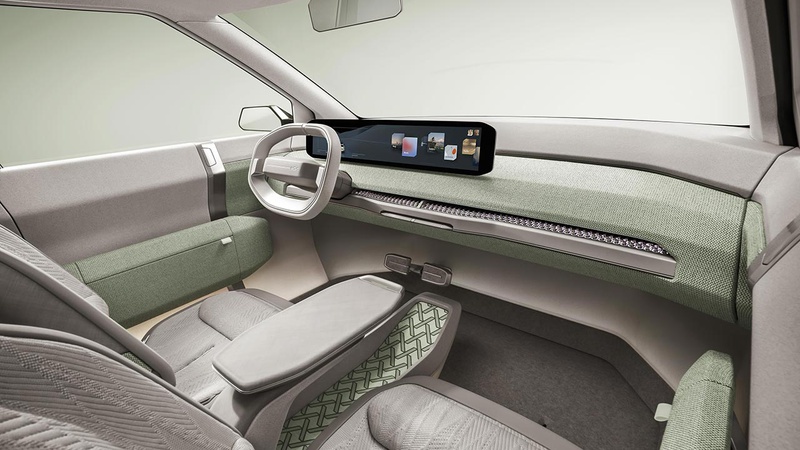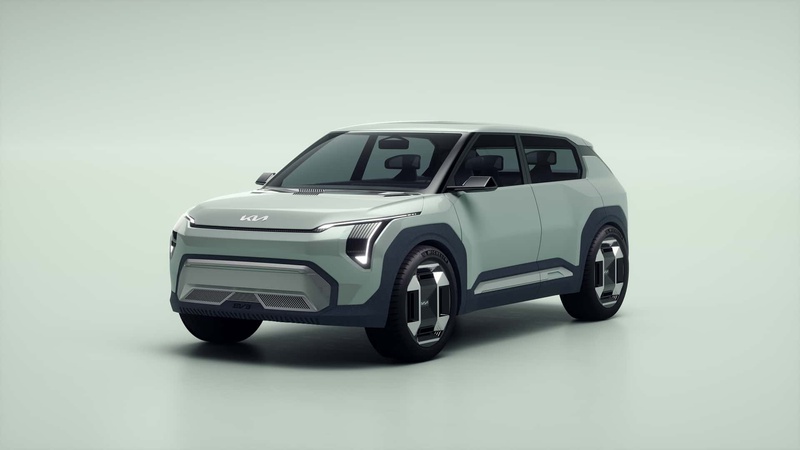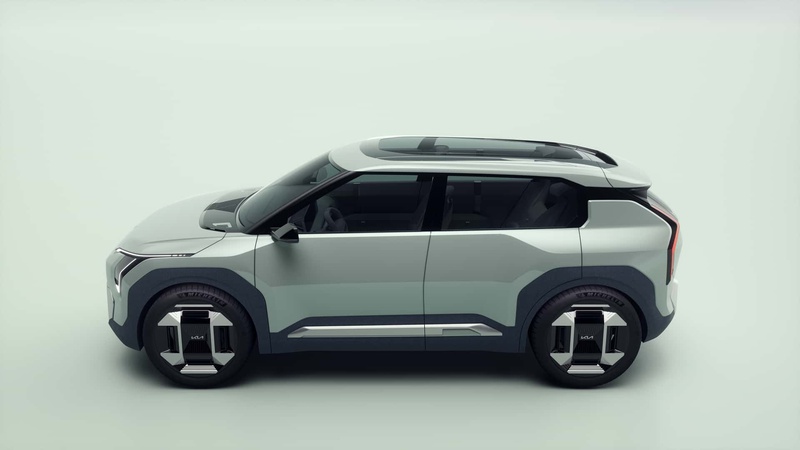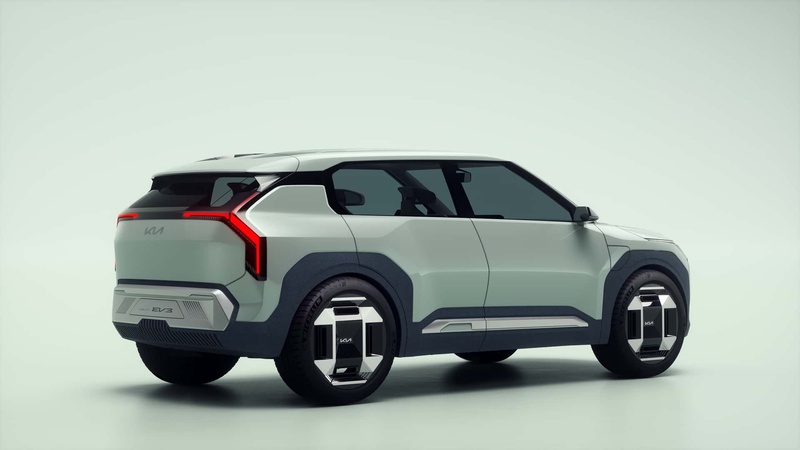In creating the interior of the Kia Concept EV3, Kia's CMF (Color, Materials, Finish) design team was inspired by the element of air, with optimal use of light and transparency throughout the cabin. The concept uses natural - as opposed to carbon - fiber structures to create a lighter, slimmer seat design. The strong, sustainable fiber weave allows for a more elegant, modern aesthetic, complemented by soothing natural tones.
For the seat covers, the CMF team used 3D Knit technology. This process not only creates a visually stunning 3D effect with an exceptionally soft surface, but also delivers class-leading efficiency with reduced seams and joints and zero material waste.




Kia EV3 Concept
The material Kia chose for the inside of the Concept EV3’s console table was not manufactured – it was grown, as Marília Biill, Head of CMF Design at Kia, explains. “Mycelium, which comes from mushroom roots, combines excellent strength with an extremely soft surface. Developing grown materials, a process referred to as bio fabrication, is a major goal for Kia.
“Using Mycelium enables us to mimic the processes we see in nature and leverage it to design more sustainable solutions – the material can be grown in any shape you want using a mold. The use of Mycelium is still at a very early stage, and, as part of Kia’s Sustainability Strategy, we are working with partners to accelerate development of the material. One day, by growing our own materials, we’ll be able to simplify processes, adapt forms and most importantly, be closer to nature in its essence.”



Kia EV3 Concept
The EV3 Concept was one of several new electric cars Kia showed off at its inaugural EV Day event in Seoul, with the others being the production version of the EV5 crossover and the new EV4 Concept sedan. But only the EV3 Concept has the ability to stow and charge what you might call an "electric micro-mobility solution."
V2L is becoming an increasingly common and popular feature on modern EVs. It turns your car into a giant mobile battery, capable of directly charging laptops, tools, appliances, or anything else that runs on electricity. On Kia and Hyundai’s EVs, you typically connect your device to an adapter that resembles a J1772 plug, press a button, and then enjoy some flowing electrons.
While Hyundai Motor Group currently does not make scooters or e-bikes, it’s flirted with things like that in the past and it’s said it is exploring ways to expand into so-called "last mile" mobility solutions. For the kind of younger, urban buyer Kia would aim the EV3 at, the ability to store and charge such a device could be a massively useful feature – especially as e-bikes start to outsell regular bikes in certain markets.



Kia EV3 Concept
Speaking of exterior styling, the EV3 Concept follows the same playbook as some of its big brothers: it's basically an EV9 or EV5, but about the size of a Kia Niro. It's going to be a crucial part of Kia's plans to significantly expand its EV lineup to more than 1 million global sales by 2026 and ultimately have EVs make up nearly 40 percent of its global sales by 2030. That should also make the production EV3 the smallest member of the Hyundai Motor Group's E-GMP platform yet, though there's no word yet on battery sizes or specifications.
The production version of the Kia EV3 is expected to cost around $35,000 for the entry-level version.
Source: Kia
.jpg)
